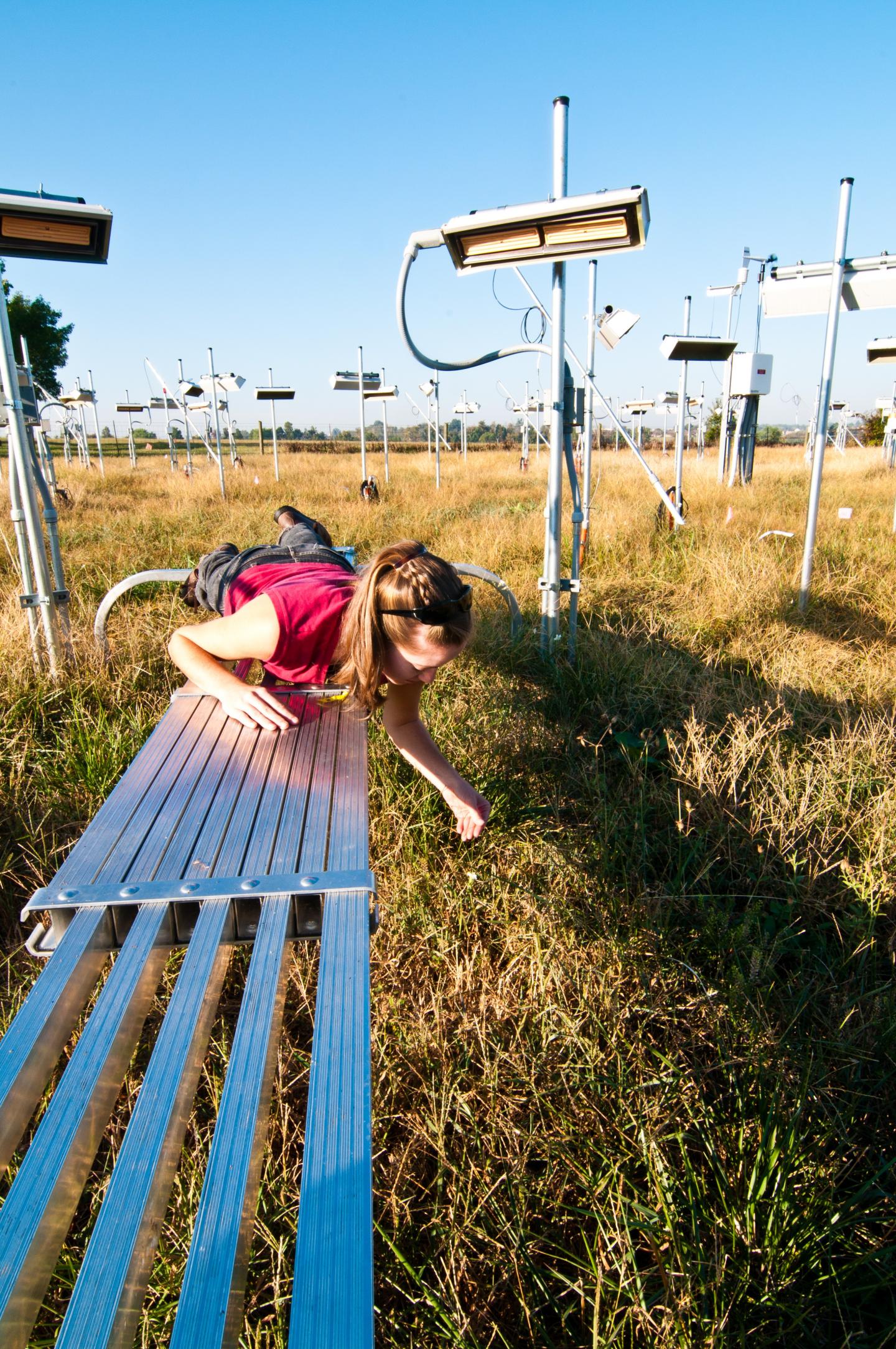

Elizabeth Carlisle reaches into a +Heat plot during plot work in Fall 2010.
Photo credit Danny Walls
There's more to an ecosystem than the visible plants and animals. The soil underneath is alive with vital microbes. They make sure nutrients from dead plant and animal material are broken down and made useable by other plants. This completes the process of nutrient cycling and carbon storage.
Scientists are learning more about how important these microbes are. But how do changes in temperature and precipitation levels affect microbes? And will that affect carbon storage?
A view of the whole experimental layout after initiation of warming and precipitation treatments.”These pasture systems are pretty understudied in terms of how climate change will affect them, which is not good because these areas rely so heavily on agriculture,” says Lindsey Slaughter of the University of Kentucky. “While this work was part of a longer project studying plant communities, I was able to study soil microbial communities over one year because they are such an important part of these ecosystems.”
The project contained four study conditions applied to a Kentucky pasture. One treatment experienced the natural seasonal changes of rainfall and temperature. A second treatment was 3°C warmer than the natural temperature. A third received 30% more precipitation during the growing season. A final group received both extra warming and rainfall treatments.
Slaughter took samples of the soil and its microbes each season. She measured various features of the microbial population. She also looked at how these bacteria and fungi responded to carbon in soil as food.
The experiment revealed some differences associated with warming. Winter soils in the warmed plots had less carbon available for microbial use. These warmed plots also contained 16% more microbes, year-round, compared to those not warmed. However, the most variation occurred because of the seasonal changes in temperature and precipitation, not the experimental changes.
“It was really unexpected because we thought that the experimental conditions would lead to more changes for the soil microbes,” explains Slaughter. “We only sampled one year out of the larger five-year study. We can't be sure if the microbes experienced changes initially and just adapted by the time we sampled them, or if their characteristics stayed the same over the whole period. It's an issue of timing that deserves more research.”
Reaching into an added heat test plotThe results do not mean these microbes are immune to a changing climate. Slaughter explains the experiment may have reflected short-term stresses the bacteria are able to cope with. For example, the year the study was conducted was a normal year for weather, but in the past the area experienced severe drought.
“If the changes that I saw in one unstressed year, such as the low carbon in the winter in warmed plots, were to persist in the next couple of years, that could have long term effects on the microbes and even the plants,” Slaughter says. “We found big differences in plant communities due to the different treatments, even though we saw little difference in soil microbial communities.”
She adds that more severe, long-term stresses from a changing climate could cause negative effects. The role of soil microbes in storing carbon dioxide is important to consider in climate change models because they can have such a large impact.
“It's hard to make generalizations about how areas will react to the effects of climate change. Different regions will experience different changes,” says Slaughter. “Our results show that for this year-long period, seasonal changes had more of an effect than making the soils warmer and wetter. But the small changes we did see definitely point to the need for a long-term study here and in other locations.”
###
Soil Science Society of America Journal published the research, funded by the U.S. Department of Energy and National Science Foundation.












